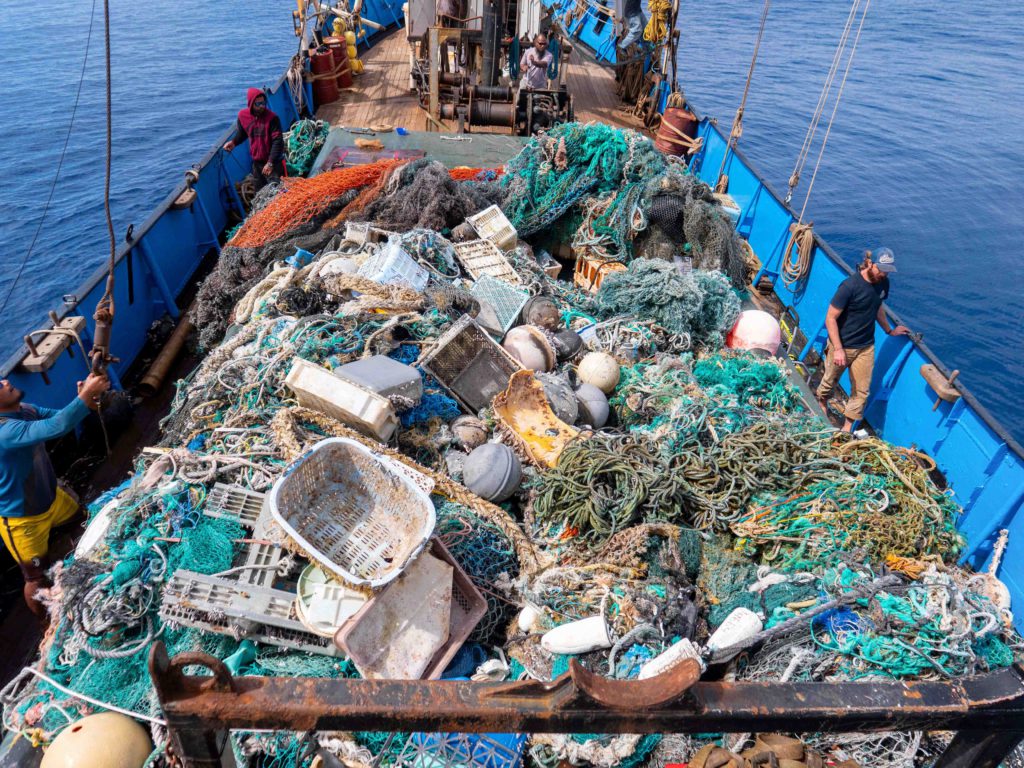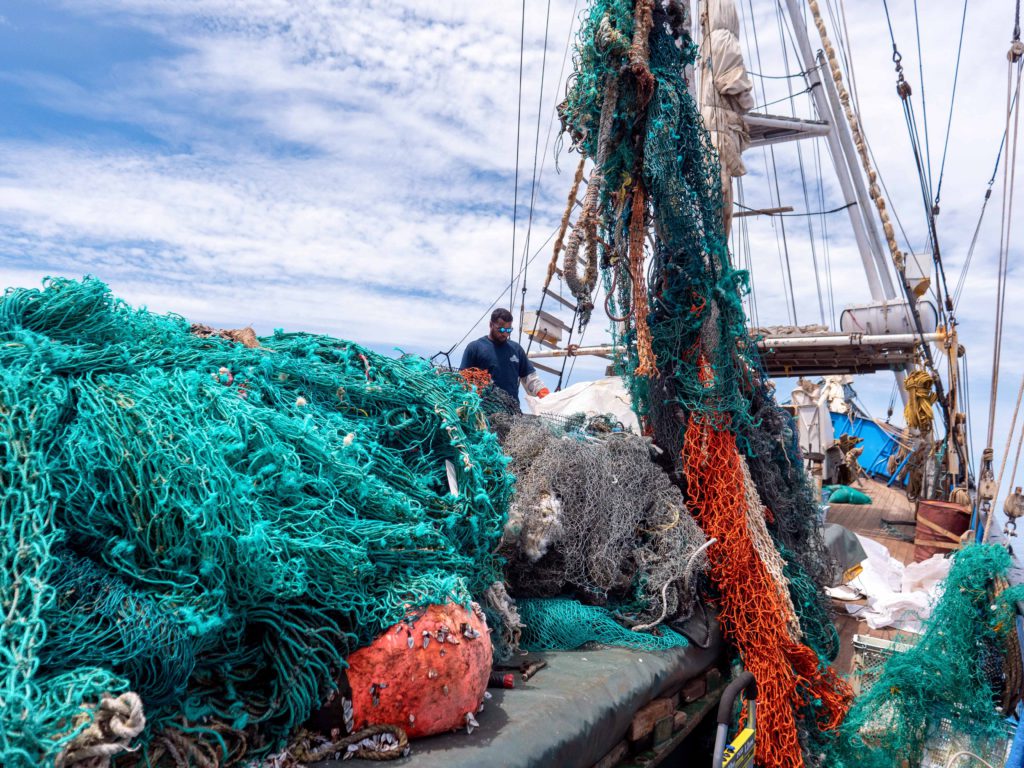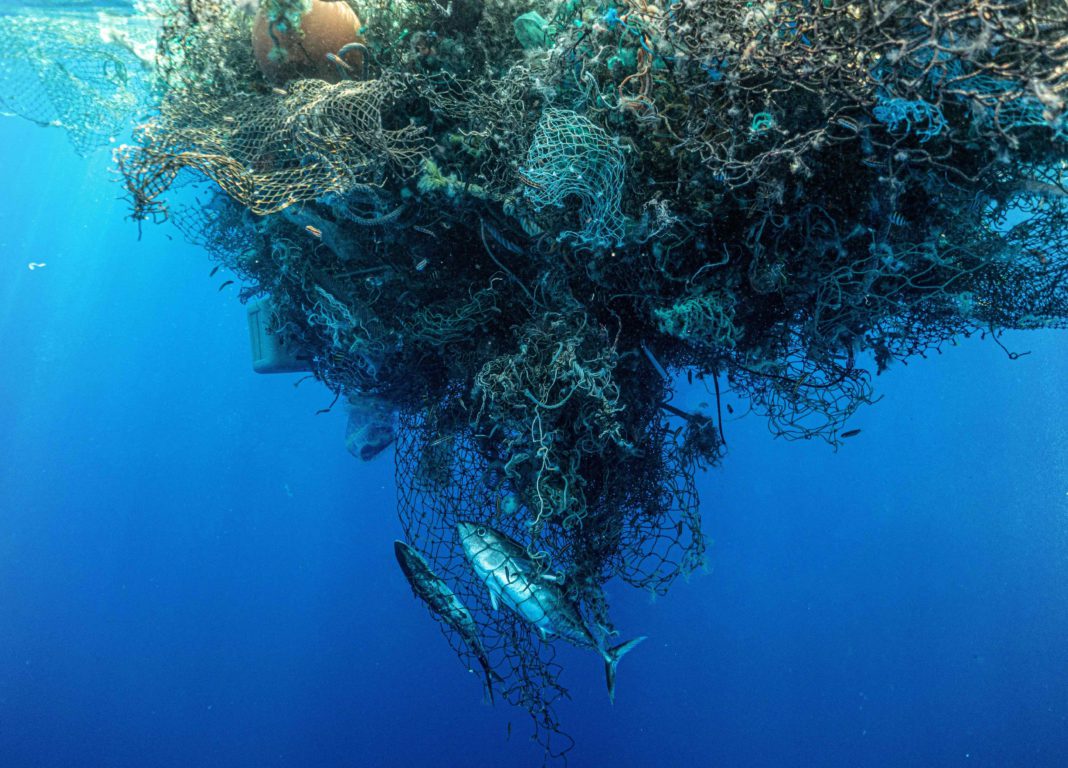Mary Crowley prefers not to use the term “garbage patch” when referring to the tons of plastic littering the Pacific Ocean and killing marine life.
“Patch sounds small,” Crowley said. “People mistakenly think of it as a big clump of garbage.”
Small, it’s not. There are 79,000 metric tons (87,100 U.S. tons) of plastic afloat in the area from California to Hawaii, according to a 2018 ocean and aerial survey chronicled in Scientific Reports, a peer reviewed journal.
To give that statistic some perspective, worldwide, 269,000 tons of plastic is floating in the oceans, revealed a 2014 study in PLOS One. The section of the Pacific Ocean between California and Hawaii contains almost a third of the global total.
If anyone can accurately describe the massive scope of the plastics problem in the Pacific, it’s Crowley, the founder and director of Ocean Voyages Institute, a nonprofit based in Sausalito. She didn’t, however, set out to become an expert on the topic. In fact, the seasoned mariner was happy operating her yacht chartering company and logging 125,000 miles sailing the world. Yet with each passing year, she noticed more and more plastic in the ocean.
Finally, Crowley knew she had to act. Since 2009, she’s led eight cleanup expeditions, hauling more than 700,000 pounds of plastic out of our planet’s blue heart and transporting it to recyclers. Although Ocean Voyages Institute is relatively small, it’s dynamic, Crowley said. The local nonprofit works with renowned establishments, including the Smithsonian Institution, Scripps Institution of Oceanography, the University of Washington and the University of Hawaii.

Crowley and her team of volunteers from Ocean Voyages Institute don’t simply sail to a huge stationary island of trash ready to be collected—there’s actually no such thing. Instead, they head to a portion of the North Pacific Subtropical Gyre, between California and Hawaii, in search of accumulated plastic.
A gyre, a large swirling ocean current, draws in and traps debris in the calm center of its vortex. Each of Crowley’s cleanup missions has recovered almost every type of plastic garbage imaginable, including enormous pieces of fiberglass vessels, tangles of nylon fishing nets weighing from 600 pounds to 10 tons, lawn furniture, children’s toys and microplastics.
“The question comes, where is the garbage gyre, and how large is it?” Crowley asks. “Because it’s an area made by ocean currents, it moves around some and changes in size. It can start as close as 600 miles off the coast of California and as far as 600 miles off the coast of Asia. Some say it’s the size of Texas, or double or triple that large. But the plastics are really quite spread out.”
As Crowley learned during Ocean Voyages Institute’s first two missions, it’s challenging to locate these moving targets of garbage in the vast ocean. The problem, currents pushing the garbage from place to place in the ocean, also presented the solution.
“I began thinking about debris distribution—the way the ocean sorts things,” Crowley said. “The current puts things of similar shapes and sizes together over time. I have personally seen more than 4,000 white laundry detergent containers spread across a five-mile area in the ocean. People who don’t understand ocean currents ask, ‘Who dropped all these bottles out here in the same place?’”
Crowley wondered if the ocean currents also sorted synthetic fishing nets in the same way, even though they come in many different shapes and sizes. While all plastic pollution in the ocean spells disaster for the ecosystem, abandoned fishing nets can be particularly deadly to marine life. Ghost nets, as the derelict gear is often called, continue to fish for as long as they remain in the ocean, ensnaring and killing whales, dolphins, sea turtles and pelagic fish such as tuna, swordfish and mackerel, which inhabit the ocean column away from the bottom or shore.

“Sadly, we hardly ever get to rescue creatures caught in the ghost nets,” Crowley said. “Because they’re skeletons when we find them.”
Removing ghost nets became a priority for Ocean Voyages Institute. But the organization still needed effective methods to locate the gear. In 2010, Crowley put together a “marine debris collection think tank,” which included folks from sailors to scientists trying to find the answer.
Think tank members developed a method to keep track of the abandoned nets, even as the ocean currents moved them to different areas. Using GPS technology, they designed a volleyball-sized tracking device with a very long battery life that could be attached to the debris with carabiners.
The organization now distributes these reusable seven-pound trackers to volunteer mariners making a trip from California to Hawaii. Upon encountering ghost nets or other large debris, the sailor clips the tracking device to the garbage, turns it on and informs Ocean Voyages Institute that the beacon is now operating.
“The trackers were a breakthrough for us,” Crowley said. “It allows our oceanographers to have access to the movements of the plastic in real time and allows our cleanup ships to go directly to the ghost nets.”
Tracking the garbage also proved Crowley’s theory that the currents sort the derelict nets in the same way they sort laundry detergent bottles.
“Frequently, where there is one ghost net, we might find five or six in the same area, along with other plastic debris,” Crowley said.

After the plastic is collected by Ocean Voyages Institute, it’s brought to land—but never to a landfill. Volunteers sort the plastic for distribution to different recycling companies. Climate action artists from the University of Hawaii used the plastic in art projects, and a German company transformed it into jewelry and dog leashes.
The bulk of the garbage goes to larger companies, such as ByFusion in Los Angeles, which recycles plastics into building materials. Resynergi, a Rohnert Park company, uses the debris to produce clean chemicals that can then be turned into plastic again. Circle of life.
Since it appears that society and industry aren’t willing to stop manufacturing and using plastics anytime soon, Ocean Voyages Institute’s mission continues. This summer, the team will again be cleaning up the Pacific’s plastic vortex, and they’re asking for assistance from the mariner community.
“We’re actively seeking sailors who are going from California to Hawaii,” Crowley said. “They could take photographs or bring our GPS trackers to tag ghost nets. People doing more extensive cruising can help with water sampling. Sailors can make a big difference to help ocean science.”
Mariners interested in volunteering, contact Ocean Voyages Institute at












I love that you call the ocean the “blue heart” of the earth.
So descriptive and poignant!
Thanks again for writing about what we don’t want to think or hear about. But we are whistling past the graveyard, our own.
Very encouraging. When I have read about the subject previously it has always
seemed hopeless by its sheer scope. However, these statistics give one hope.
I also hope that eventually it won’t be necessary, but in the meantime, thanks
so much to all who are currently tackling this enormous problem.
Safe oceans safe environment.